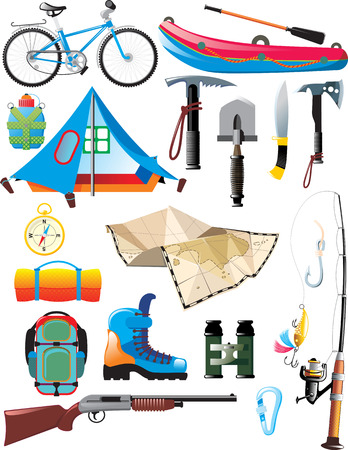Introduction to Camping in the Hebrides
The Hebrides, a scattered archipelago off Scotland’s wild west coast, are a siren call for hardened outdoor enthusiasts and seekers of raw, untamed beauty. Here, vast stretches of wind-lashed moorland tumble into rugged sea cliffs, turquoise bays, and beaches so pristine they seem untouched by human hands. The air carries the tang of salt and peat smoke; the land is steeped in ancient Gaelic culture and myth. For those who crave true adventure, camping in the Hebrides offers an experience unlike any other—where remoteness is not a drawback but a badge of honour. Whether you favour pitching up beneath star-strewn skies or embracing the spirit of wild camping amid sweeping machair grasslands, this remote corner of Scotland delivers an authentic taste of wilderness. Prepare yourself: here, self-reliance is essential, weather can turn in a heartbeat, and every sunrise promises an unforgettable outdoor escape.
Essential Kit and Survival Tips for the Hebrides
When venturing into the wild beauty of the Hebrides, preparation is everything. The islands’ rugged terrain and unpredictable weather demand a level of respect and readiness every seasoned camper in Britain knows well. Here’s your hard-hitting guide to assembling the right kit and adopting key survival strategies—so you can focus on soaking up the Hebridean splendour without unnecessary risk.
Weather-Resilient Gear: Stay Dry, Warm, and Safe
The Hebrides are notorious for rapidly shifting conditions—one moment it’s sunshine, the next you’re fighting horizontal rain straight off the Atlantic. Your kit must be up to the task. Below is a breakdown of essentials:
| Category | Recommended Items | UK-Specific Tips |
|---|---|---|
| Shelter | 4-season tent, robust pegs, groundsheet | Ensure tent is wind-tested; bring extra guy lines for gales common on exposed pitches |
| Sleeping | Insulated mat, 3-4 season sleeping bag, bivvy liner | Down insulation is lighter but synthetic handles damp better—choose based on forecast |
| Clothing | Waterproof jacket/trousers (GORE-TEX), thermal base layers, wool socks, hat & gloves | Pack spares in dry bags; layering is key against Scottish chill |
| Cooking & Hydration | Portable stove (gas or solid fuel), British Standard refillable gas canisters, water filter/purification tablets, sturdy flask | No open fires—use stoves only; always check local water sources for livestock contamination |
| Navigation | OS Explorer maps (paper), compass, GPS device with UK mapping, headtorch (with spare batteries) | Mobile signal is patchy; never rely solely on phones. Know how to use a map & compass properly. |
| First Aid & Safety | Bespoke first aid kit, midge repellent/net, whistle, personal locator beacon (PLB) | Midges swarm from late spring—don’t underestimate them! |
| Leave No Trace Kit | Biodegradable wipes, rubbish bags, trowel for toilet needs (where permitted) | Packing out all waste is non-negotiable on these wild islands. |
Navigational Mastery: Don’t Get Caught Out
The remote nature of many Hebridean campsites means wayfinding skills are paramount. Always plan your route in advance using Ordnance Survey maps and mark escape points for emergencies. In misty conditions or sudden squalls—which happen often—compass bearings and physical markers become lifesavers. Locals will tell you: “If you can’t see the next ridge, don’t set out.” Stick to that advice.
The Golden Rules: Leave No Trace in the Hebrides
The UK’s camping culture prides itself on respect for nature. Follow these principles religiously:
- Campsites should be at least 30m from lochs or streams.
- Avoid disturbing wildlife or livestock.
- Peg down tents carefully to avoid damaging fragile machair grassland.
- All rubbish—including food scraps—must be packed out.
Tough-Minded Survival Mindset
The Hebrides reward those who approach them with grit and respect. Pack smartly, know your limits, and always err on the side of caution—because here in Britain’s wild west, nature always gets the final word.

3. Scenic Campsites Across the Isles
The Hebrides are a wild camper’s dream, offering a patchwork of breathtaking landscapes and authentic experiences. From the windswept beaches of Harris to the rugged mountains of Skye, each island boasts its own distinctive character and array of camping options—whether you prefer official sites with facilities or crave the raw solitude of wild camping. Below, we highlight some of the most scenic official and wild campsites across the Hebrides, focusing on their unique appeal, accessibility, and what makes each one stand out for an unforgettable outdoor adventure.
Isle of Skye: Rugged Peaks & Sea Views
Skye’s dramatic Cuillin range forms a jaw-dropping backdrop to several established campsites like Glenbrittle, famous for its proximity to hiking trails and sea lochs. For those after seclusion, wild pitches near Loch Coruisk or along the Trotternish Ridge offer unrivalled vistas—just be prepared for rapidly changing weather and practice Leave No Trace principles.
Harris & Lewis: White Sands & Machair Meadows
Luskentyre Beach is a magnet for campers seeking turquoise seas and endless sand dunes. The nearby Horgabost campsite provides easy access while retaining a remote feel. Venture further north to Eoropie on Lewis for wild camping among machair meadows—spring and early summer are particularly stunning when wildflowers bloom.
Uists & Barra: Tranquil Isles Off the Beaten Track
North Uist’s Balranald campsite sits close to a nature reserve teeming with birdlife, perfect for wildlife enthusiasts. For true isolation, South Uist’s beaches allow discreet wild pitching amid shifting sands and salt marshes. On Barra, pitching up at Scurrival Point rewards you with panoramic Atlantic views—just mind the tides and respect local crofting land.
Mull & Coll: Woodland Escapes & Starry Nights
Mull’s Pennygown Holiday Park offers sheltered woodland spots, ideal for families and novice campers wanting basic amenities. Coll, by contrast, is famed for dark skies—wild camping here means stargazing opportunities few places in Britain can rival. Always check ferry schedules, as reaching these islands requires forward planning.
What Sets These Spots Apart?
Each campsite across the Hebrides reflects its island’s soul—whether it’s the jagged drama of Skye, the tranquil machair of Lewis, or the star-studded nights on Coll. Accessibility varies: some sites cater to car campers and motorhomes with good road links, while others demand a bit of hiking grit or careful coordination with ferries. Wherever you pitch your tent, expect raw beauty, unpredictable elements, and memories forged in one of Britain’s last true wildernesses.
4. Local Wildlife and Natural Hazards
The Hebrides are a sanctuary for rare flora and fauna, offering campers the chance to immerse themselves in a truly wild landscape. Rugged coastlines, windswept machair, and peat bogs host species found nowhere else in Britain. Whether you’re pitching your tent on Skye’s dramatic cliffs or the white sands of Barra, respecting local wildlife is crucial.
Hebridean Flora and Fauna
You’ll encounter an astonishing array of plant life: vibrant orchids, sea pinks, and heather thrive in exposed conditions. Birdwatchers will spot golden eagles, corncrakes, and puffins along the shore. Otters may slip through kelp beds at dawn, while red deer graze on distant hillsides.
| Wildlife | Where to Spot | Precautions |
|---|---|---|
| Puffins | Clifftops (Staffa, Shiant Isles) | Keep distance during nesting season |
| Otters | Sea lochs (Mull, Harris) | Observe quietly at dawn/dusk |
| Corncrake | Machair (Uist, Coll) | Avoid disturbing habitat |
Midges: The Infamous Nuisance
No Hebridean camping trip is complete without meeting the notorious midge. These tiny insects thrive in damp, still conditions—especially at dawn and dusk. Pack strong repellent (preferably DEET-based), wear long sleeves, and consider investing in a head net for true survival grit. Pitch camp away from stagnant water and keep tents zipped tight.
Tides and Coastal Hazards
The Hebrides’ coastlines are as treacherous as they are beautiful. Tides can rise rapidly, transforming beaches into impassable stretches within minutes. Always check tide tables before setting up camp near the shore and position your tent above the high-water mark. Rocky outcrops can become slippery after rain—proper footwear is non-negotiable.
Essential Tidal Safety Tips
- Consult local tide charts daily
- Avoid isolated sandbanks or causeways during incoming tides
- If unsure, ask locals or campsite wardens for advice
Unpredictable Weather: Be Prepared or Be Sorry
Hebridean weather is famously fickle—sunshine one moment, horizontal rain the next. Your survival hinges on preparation: bring layered waterproof clothing, secure tents with storm pegs, and never underestimate the wind’s power. Monitor Met Office forecasts regularly via radio or mobile app when signal allows.
Packing Essentials for Wild Hebridean Campsites
| Item | Purpose |
|---|---|
| Midge net & repellent | Protection from biting insects |
| Sturdy waterproofs & boots | Shelter from rain/wind & rough terrain |
| Tide timetable/chart | Avoid getting stranded by rising waters |
Respecting local wildlife and preparing for natural hazards isn’t just about survival—it’s how you earn your stripes as a true wild camper in the Hebrides. Stay alert, adapt quickly, and your adventure will be unforgettable for all the right reasons.
5. Cultural Connections and Local Etiquette
Camping in the Hebrides is about more than just wild landscapes and rugged coastlines; it’s an immersion into a living culture shaped by centuries of tradition. As you pitch your tent at crofting sites or seek shelter in remote bothies, understanding and respecting local customs is not just good manners—it’s essential for preserving the unique harmony between visitor and resident.
Respecting Crofting Communities
Crofting—the small-scale farming system that defines much of the Hebrides—remains at the heart of island life. Many campsites are adjacent to or even part of working crofts. Always keep gates closed, stay on designated paths, and avoid disturbing livestock. If you’re unsure whether you can camp somewhere, ask the landowner; islanders are famously welcoming when approached with respect.
Understanding Scottish Traditions
The Hebridean islands are steeped in Gaelic heritage, from the music drifting from local pubs to the ceilidhs (traditional dances) held in village halls. When invited to join, take part enthusiastically but sensitively—listen before leaping onto the dance floor, and always thank your hosts. Remember, Sunday is still observed as a day of rest on many islands, so expect quieter villages and limited services.
Seamlessly Integrating with Residents
Whether you’re sharing a bothy or chatting in a village shop, politeness goes a long way. Greet people with a friendly “hello” or even “madainn mhath” (good morning in Gaelic). Keep noise down after dark, dispose of waste properly, and never light fires without permission. Leave every spot cleaner than you found it; this isn’t just Leave No Trace—it’s showing respect for communities who call these wild places home.
Ultimately, blending in with Hebridean life enhances your adventure. By observing local etiquette and embracing traditions, you’ll forge genuine connections—and maybe even leave with a few new friends among the islanders themselves.
6. Adventure Activities and Exploring Beyond the Pitch
For those craving more than just a restful night under canvas, the Hebrides serve up outdoor thrills that test both grit and skill. The wild, untamed beauty of these islands is best experienced by getting stuck into the landscape itself. Here’s how to take your Hebridean camping adventure to the next level—no half measures.
Hillwalking: Conquer Rugged Heights
The Outer Hebrides are a magnet for keen hillwalkers. From the peaks of Harris to the rolling ridges of North Uist, each island boasts its own character. Lace up your boots and tackle Clisham—the highest point in the Western Isles—or seek out coastal paths with dramatic Atlantic views. Always check local weather and carry OS maps; conditions change fast, and navigation skills are essential.
Sea Kayaking: Paddle Wild Waters
With miles of craggy coastline, sheltered sea lochs, and remote inlets, the Hebrides are heaven for paddlers. Hire a kayak or join a guided tour from campsites near Barra, Lewis, or South Uist. Glide across turquoise bays, spot seals and otters, and explore secret beaches only accessible by water. Don’t forget your wetsuit—the Atlantic is bracing even in summer.
Cycling: Take on Island Roads
The Hebridean Way stretches over 185 miles from Vatersay to Lewis, weaving through landscapes dotted with standing stones and crofting villages. Bring your bike or rent locally; many campsites cater for cyclists with secure storage and repair facilities. Expect stiff winds and ever-changing weather—classic British grit required—but you’ll earn every panoramic view.
Heritage Trails: Walk Through History
If you crave a slower pace or want to dig into local culture, follow one of many heritage trails criss-crossing the islands. Explore ancient brochs, Iron Age settlements, ruined blackhouses, or medieval churches along well-marked routes. Interpretation boards at sites like Callanish Stones bring history to life—a perfect way to round out your wild days with some Hebridean storytelling.
Pro Tips for Thrill-Seekers
- Pace yourself—weather can turn quickly, so pack layers and waterproofs.
- Always inform someone of your route before heading off-grid.
- Support local guides—they know hidden gems off the tourist trail.
Conclusion
The top campsites in the Hebrides aren’t just about stunning pitches—they’re launchpads for real adventure. Whether you’re hiking lonely moors or paddling wild seas, you’ll return with stories worthy of any campfire. Embrace the elements, respect local traditions, and let the islands push your limits—this is outdoor living done the hard way.
7. Practical Information and Further Resources
Before you lace up your boots and load your kit, it’s crucial to understand the practicalities of accessing the Hebrides’ top campsites. Most sites are accessible by a combination of ferry routes—CalMac Ferries being the backbone service between mainland Scotland and the major islands—and well-maintained single-track roads. Public transport is sparse but reliable; local buses connect ferry terminals to larger villages, though hiring a car or bringing your own offers far greater flexibility, especially for reaching remote pitches.
Access and Regulations
Scotland’s unique Outdoor Access Code grants wild camping rights, provided you respect local wildlife, leave no trace, and avoid enclosed fields or private gardens. Many scenic campsites in the Hebrides are either family-run or basic council-owned pitches—booking ahead in peak months is wise, as capacity can be limited. Check for local by-laws, especially around popular spots such as Luskentyre on Harris or Calgary Bay on Mull.
Transport Links
Mainland departure points include Oban, Mallaig, and Ullapool. Once across, island hopping is possible via smaller ferries or bridges (like Skye’s). Cycling is popular, but be prepared for changeable weather and exposed stretches. For those without a vehicle, consult Traveline Scotland for public transport timetables.
Further Reading and Local Contacts
To plan your journey like a pro, consult the Scottish Outdoor Access Code (outdooraccess-scotland.scot) for up-to-date guidance. Caledonian MacBrayne (calmac.co.uk) provides essential ferry schedules and booking options. For campsite specifics and insider tips, VisitScotland (visitscotland.com) lists both official sites and wild camping recommendations. Finally, consider connecting with local tourist offices in Stornoway, Tobermory, or Portree—they offer maps, tide times, and sometimes even gear hire advice. Preparation is the difference between an unforgettable adventure and an ordeal: know before you go.


